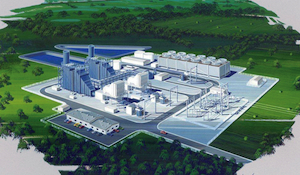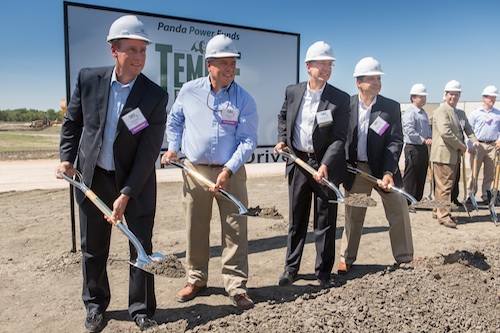Panda Power Funds is bringing two new natural gas-fueled, combined-cycle power plants to Texas, one in Temple and the other in Sherman. Both plants will be built by a turn-key consortium of Bechtel and Siemens Energy Inc.


On September 6, the companies broke ground on the Temple project, which will provide 758-MW of power to the local area when complete in 2014. The site is 250 acres in size, with some room for expansion, says Bill Pentak, vice president of Investor Relation sand Public Affairs at Panda Power Funds.
Bechtel will be responsible for engineering, procurement, construction and commissioning of the facility, says Bechtel Project Director Todd Whorten. “Our team started the engineering and design work earlier this year and is now supervising the construction of the facility,” he says.
Meanwhile, Siemens will supply the power island of the plant, which “consists of two SGT6-5000F gas turbines, one SST6-5000 steam turbine, two SGen6-1000A generators, one SGen6-2000H generator, the SPPA-T3000 instrumentation and control system as well as two Benson heavy duct- fired heat recovery steam generators manufactured by NEM,” explains Mario Azar, head of Gas Turbine Power Plant Solutions Americas in the Fossil Power Generation at Siemens Energy.
Whorten adds that both Bechtel and Siemens will undertake design and procurement of equipment and materials with project teams in Frederick, Md., Orlando, Fla., and New Delhi, India.
“A long-term service agreement has also been signed for the main generation components. The gas turbines, steam turbine and generators will be manufactured in the Siemens factory in Charlotte, N.C., which is the main production facility for Siemens 60 Hz power generation equipment,” Azar says.
The companies claim that the Temple plant will be one of the cleanest fossil fuel power plants in the United States, with CO emissions of less than 10-ppm and NOXemissions under 2.0 ppm.
This facility will use state-of-the-art control technologies to reduce atmosphere pollutants to minimum levels, including NOX, CO, CO2, VOCs and PM, Whorten explains.
“NOXand CO are controlled by specially designed burners in the combustion turbine. NOX in the exhaust gas is further reduced by a catalytic reduction process that takes place downstream of the combustion turbine,” he says. “CO2emissions are reduced as a consequence of the high overall efficiency of the power plant – approximately 55% – compared to coal-fired power plants or older technology combined-cycle power plants.”
Additionally, the Zero-Liquid-Discharge technology that will be utilized at the plant “ensures maximum recycling of clean water within the facility to minimize overall water consumption, with the balance of wastewater discharged to an on-site evaporation pond,” Whorten says.

